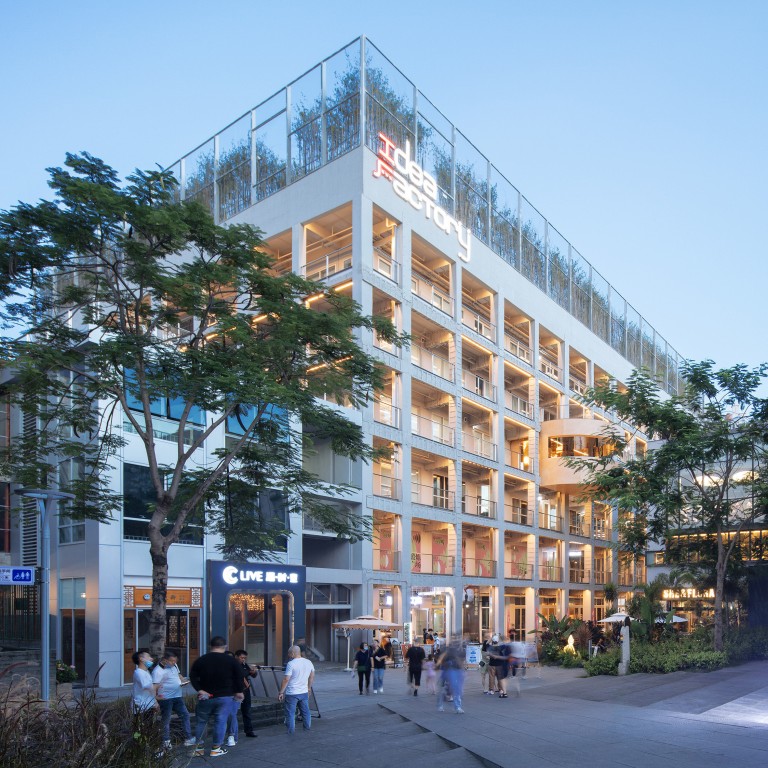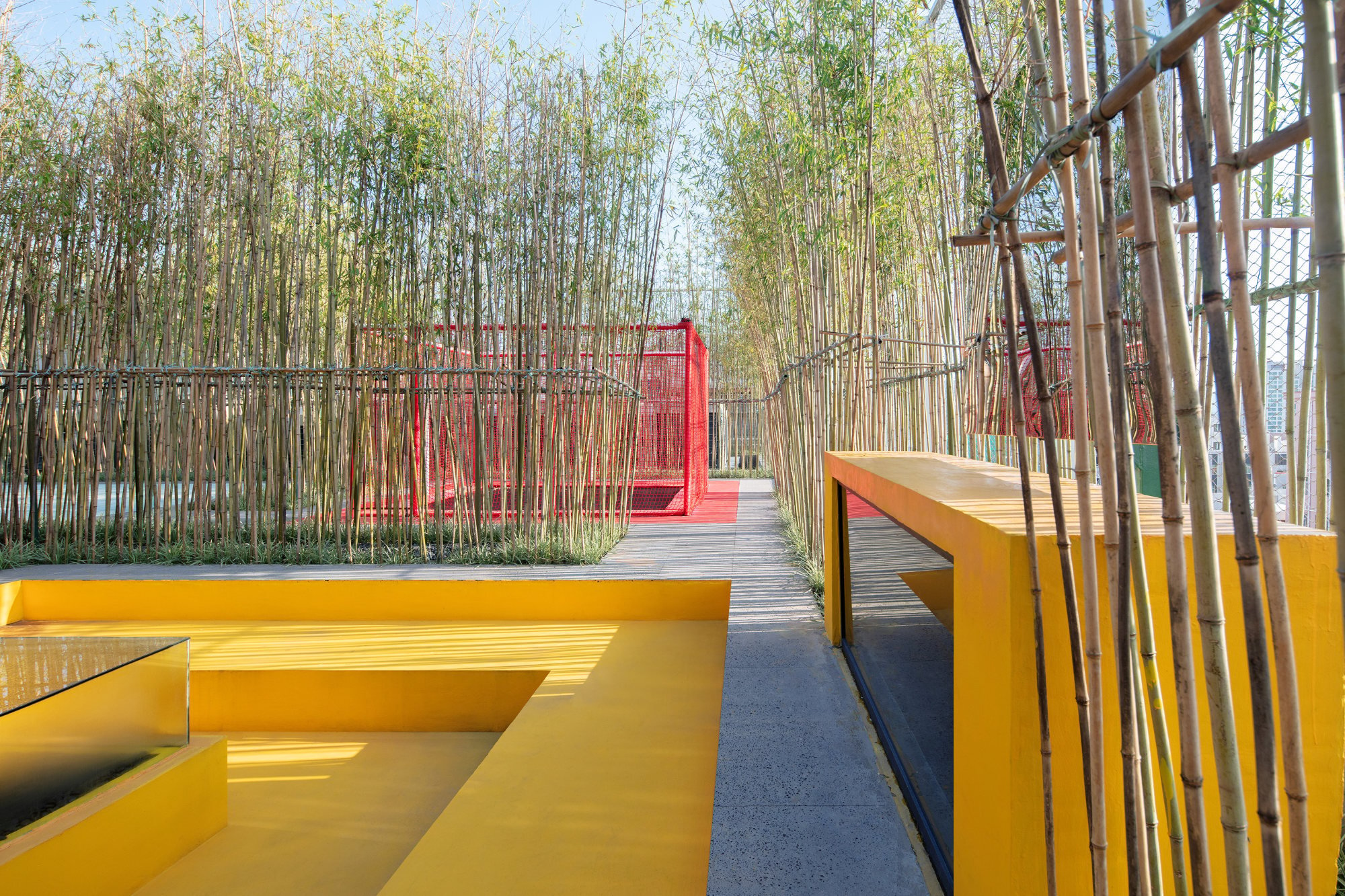
Architects recycle Chinese factory into a ‘new-old’ structure, with a community green roof and office space for creatives
- Dutch architects MVRDV turned an old factory building in Shenzhen into the Idea Factory, an open-office environment that meshes with the urban village around it
- Features include a public staircase and community-oriented rooftop bamboo garden with a climate agenda
In Shenzhen, 24 metres (80 feet) above a 1,700-year-old southern China neighbourhood, a rooftop bamboo garden has been designed for visitors to bounce on trampolines, swing in hanging chairs, dance and much more.
This public space is the icing on the cake of the Idea Factory, a new office building that developer Vanke commissioned Dutch architects MVRDV to craft from a plain old factory building.
Winy Maas, MVRDV founder-partner and leader on the design, says: “We have created a package of encounters.”


“It is for sure an Asian reference,” says Maas, who professes a love for streets in Hong Kong and Shenzhen that have retained these illuminated staples of the past. The stairs switch direction halfway up, “pop[ping] out in a median point where you can look out over the street”, he adds.
The new, rounded, wood-clad landing with a balcony above is, literally, a stand-out feature.

To top it all off, the roof becomes a public space, divided by a maze of living bamboo. This is “a typhoon-proof green roof [using] new techniques of watering. [It] not only has a social agenda but also a climate agenda. It’s like a cushion on top,” he says.
The bamboo creates a set of “rooms”, each offering something different. Some are open to the sky, like those with sunbeds and hanging chairs, and others house pavilions that serve as a teahouse or a performance space.
In addition to the Urban Research Institute of Vanke China, Idea Factory’s occupants are from the design and creative industries, including theatre, opera and film animation. There is even a vinyl record shop.

“Gentrification is double-sided,” Maas says, acknowledging the predicament that could face the less well off. “We wish that cities become a little bit busier, we want to have more wealth. It’s [also] very good that the city has different kinds of people. [But] the warning that you pick out for poor people, that’s a threat and I completely agree.”
Behind 133 Wai Yip Street is a dark backstreet, and MVRDV had to persuade the developers to install glazing, allowing the offices to “light the alley in the evening, so it becomes a social space”. That has a parallel with the Idea Factory, because its outward-looking loggia connects to the vibrant street life of Nantou’s surrounding alleys. “It has a social component,” Maas says.

The Idea Factory can also claim green credentials, not just because its roof brings some biodiversity to Nantou but also because greenhouse gas emissions are saved by not replacing old structures with new. The Idea Factory, he says, “shows that the hyper-new city of Shenzhen is entering its phase of reusing and renewing old buildings and turning them into the new-old”.
Maas believes that Hong Kong can learn from Shenzhen in areas such as planning, which is more liberal and open to experimentation north of the border. But his experience of Wai Yip Street was applicable to the Idea Factory, and provided lessons going the other way.
It’s just one example of how Maas sees the cities playing “a kind of urbanistic ping-pong game to learn from each other”.
